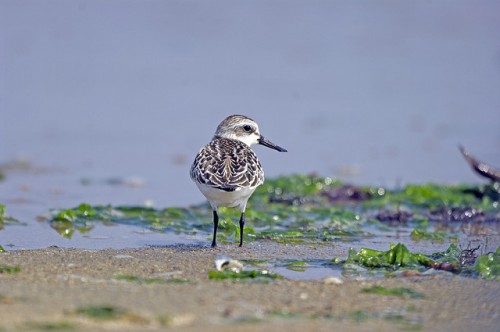Every year, a tiny bird called the spoon-billed sandpiper tours the Asian economic boom.
From its breeding grounds in Chukotka, an autonomous region in the Russian Far East, the sandpiper makes a 5,000-mile migration through South Korea, coastal China, and finally to Southeast Asia — including the shores of newly busy Myanmar, where the birds overwinter on barrier islands in the Andaman Sea. Hunting, coastal dredging, and development along the migration route have literally decimated the species over the past decade, and now fewer than 100 pairs remain in the wild. It’s one of the world’s most endangered birds.
Saving a species so close to extinction is never easy — or cheap — but the sandpiper’s multinational habitat makes its conservation an especially complex effort. In Myanmar and elsewhere, local and expat conservationists have been working to stop shorebird hunting, convincing trappers to give up their trapping equipment in exchange for grants to buy fishing gear. And at the other end of the migration route, in Chukotka, a group of British and Russian biologists spent most of this summer fretting over a flock of very tiny — and extremely adorable — sandpiper chicks.
The biologists were part of a “headstarting” project, run by the Wildlife and Wetlands Trust and other organizations, aimed at boosting the number of sandpiper chicks that survive to migrate each year. The biologists brave mosquitoes and bears to search out sandpiper nests, then collect the birds’ eggs. If all goes well, the empty-nest sandpipers produce one or two more clutches of eggs in the same season, and the biologists increase survival rates by incubating the eggs and raising the chicks away from bad weather and hungry predators.
It’s difficult, nerve-wracking work for the biologists — and one imagines that it’s unsettling, at the very least, for the birds. But this year, the biologists were able to release 16 young birds in time for the start of the southerly sandpiper migration. As take-off day approached, the biologists reported, both the wild and the hand-raised birds became restless, calling and making short test flights through their marshy habitat.
Finally, during one of the short Arctic nights, the group of hand-raised chicks departed, and within a few days all the sandpipers had headed south. May their ranks continue to grow.
Not to be missed: The first-ever video of a spoon-billed sandpiper hatch, filmed in the summer of 2012.
Top photo courtesy of Flickr user nkenji.

One thought on “Chukotka to Myanmar or Bust”
Comments are closed.